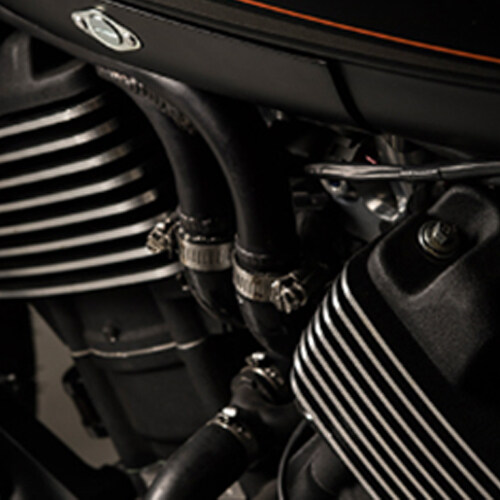Advancements in Engine Camshaft Manufacturing in China: Exploring Types and Technologies
Introduction:
Engine camshafts play a crucial role in the operation of internal combustion engines, controlling the opening and closing of valves to regulate the intake and exhaust of air and fuel. In China, the manufacturing of engine camshafts has seen significant advancements in recent years, both in terms of the types of camshafts produced and the technologies employed in their manufacturing processes. This article delves into the various types of engine camshafts manufactured in China, including flat tappet, roller, and performance camshafts, while also exploring the recent technological innovations driving this industry forward.
Types of Engine Camshafts:
Flat Tappet Camshafts:
Flat tappet camshafts are among the most common types of camshafts used in internal combustion engines. They feature flat-faced lifters that ride directly on the camshaft lobes. These camshafts find applications in a wide range of engines, from everyday commuter vehicles to industrial machinery. While flat tappet camshafts are relatively simple and cost-effective to manufacture, they may suffer from issues such as accelerated wear and limited performance compared to other types of camshafts.
Roller Camshafts:
In contrast to flat tappet camshafts, roller camshafts utilize roller-style lifters that reduce friction and wear, allowing for smoother operation and improved performance. These camshafts are commonly employed in high-performance engines, including those found in sports cars and racing vehicles. Roller camshafts offer superior durability and performance characteristics, making them a preferred choice for enthusiasts seeking optimal engine performance.
Performance Camshafts:
Performance camshafts are specially designed to enhance engine performance by optimizing valve timing and lift profiles. These camshafts feature aggressive lobe designs tailored to specific performance goals, such as increased horsepower and torque output. Performance camshafts are widely used in racing applications and aftermarket engine upgrades, where precision and customization are paramount. With the growing demand for high-performance engines, the production of performance camshafts has become increasingly sophisticated in China, catering to the needs of automotive enthusiasts worldwide.

Technological Advancements in Engine Camshaft Manufacturing in China:
Use of Advanced Materials:
One of the key technological advancements in engine camshaft manufacturing is the use of advanced materials such as alloy steels and composite materials. These materials offer superior strength, durability, and heat resistance compared to traditional materials, allowing for the production of lighter and more efficient camshafts. Chinese manufacturers have embraced the use of advanced materials to enhance the performance and longevity of their camshaft products, ensuring they meet the stringent demands of modern engines.
Computer-Aided Design (CAD) in Camshaft Manufacturing:
Computer-aided design (CAD) software has revolutionized the process of camshaft design and optimization. By utilizing CAD technology, engineers can create intricate camshaft profiles with unprecedented precision, allowing for fine-tuning of valve timing and lift characteristics to achieve optimal engine performance. CAD software also enables virtual testing and simulation of camshaft designs, reducing the need for physical prototypes and speeding up the development process. Chinese manufacturers have integrated CAD technology into their design workflows, enabling them to produce camshafts that meet the exacting specifications of modern engines while minimizing development time and costs.
Automation in Camshaft Manufacturing Processes:
Automation has played a significant role in streamlining camshaft manufacturing processes in China. Robotics and computer numerical control (CNC) machining have enabled greater precision, consistency, and efficiency in the production of camshafts. Automated systems handle tasks such as machining, grinding, and quality inspection, reducing manual labor and minimizing errors. As a result, Chinese manufacturers can produce camshafts with tighter tolerances and higher levels of quality, meeting the stringent requirements of domestic and international markets.
Conclusion:
The engine camshaft manufacturing industry in China has evolved rapidly, driven by advancements in technology and a commitment to innovation. From the production of traditional flat tappet camshafts to specialized performance camshafts, Chinese manufacturers offer a diverse range of products to meet the needs of various engine applications. Furthermore, technological innovations such as the use of advanced materials, computer-aided design, and automation have enhanced the efficiency, precision, and quality of camshaft manufacturing processes. As China continues to invest in research and development, the future looks promising for further advancements in engine camshaft technology, solidifying its position as a global leader in the automotive industry.
In conclusion, the engine camshaft manufacturing industry in China has made significant strides in recent years, both in terms of the types of camshafts produced and the technologies employed in their manufacturing processes. From flat tappet and roller camshafts to specialized performance camshafts, Chinese manufacturers offer a diverse range of products to meet the needs of various engine applications. Moreover, advancements in materials, design, and automation have further enhanced the efficiency, precision, and quality of camshaft manufacturing in China. As the automotive industry continues to evolve, China remains at the forefront of innovation, driving the future of engine camshaft technology on a global scale.



